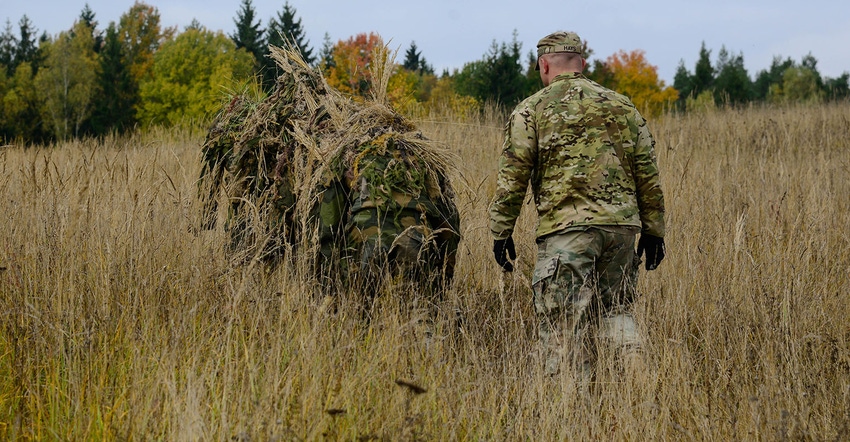An expert on composites applications shares insights on how the material enables the design and production of camouflage support poles that won’t buckle under pressure.
November 10, 2021

Tomorrow is Veterans Day in the United States, a holiday that initially was named Armistice Day and had the narrower focus of honoring the fallen soldiers of World War I. The Great War also gave birth to modern systematic camouflage techniques, the French Army being the first to create a dedicated camouflage unit in 1915, according to the British Imperial War Museums website. The designs and materials used to hide in plain sight have evolved considerably since then. Patrick Loock, Segment Business Owner for Products and Applications at Exel Composites, shared some insights on the materials and production techniques used to manufacture camouflage support poles with PlasticsToday.
“Concealing your presence, position, and intentions in the battlefield is crucial for soldiers maintaining operational effectiveness. To this end, camouflage netting support units are manufactured to withstand heavy loads, to be dismantled quickly, and be able to function in extreme environments,” said Loock.
For telescoping poles that support camouflage nets, composites are chosen over alternative materials like aluminum because of several advantages, such as lighter weight, robustness, and speed of assembly. The composite tubes must combine the strength and durability needed for support with the lightweight flexibility to be able to carry heavy loads.
Fiberglass enters the theater
Since World War II, fiberglass — a form of reinforced polymer — has been the material of choice for defense applications, said Loock. “Design engineers used it for aircraft radomes to replace molded plywood. Since then, armed forces across the globe have used fiberglass in a variety of applications because of its corrosion and weather resistance, competitive cost, and design flexibility.”
Fiberglass has excellent tensile strength, making it ideal for camouflage netting support units. It is also a great insulator with a lower coefficient of thermal conductivity than aluminum. “On the battlefield, where thermal imaging cameras are commonly used to identify the position of the opposition, fiberglass is largely undetectable,” said Loock.
Fiber alignment key to camouflage netting support
As important as the material is the fiber alignment enabled by the manufacturing process, according to Loock. “The best process for manufacturing camouflage netting support units is pull-winding because it provides a specific helical fiber alignment.” As Loock describes it, the process involves guiding reinforcing fibers, mats, and fabrics together and saturating them with resin. This technique produces fiber alignment combining both crosswise and unidirectional fibers, resulting in thinner tube walls and the strength and stiffness required for support.
Color also plays an important role, notes Loock. Quick dismantling and rough handling of support units made from aluminum and other materials may result in the color chipping away, rendering the camouflage ineffective.
To protect color integrity and ultimately, the concealment of soldiers, color pigment or dye — usually NATO green or sand — is impregnated directly into the resin, explained Loock. “This provides pigmentation across the width of the tube wall so that the same color exists even if deep scratches are made.”
Thermoset resins fit for purpose
Resin choice is critical in reinforcing the mechanical properties of a composite, stressed Loock. “For camouflage netting support units, thermoset resins are used so that the resulting composite can keep its shape throughout its lifespan. Thermoset resins also display better chemical resistance compared to others, like epoxy.
Other benefits of composites include flexibility under varying weight loads and extreme temperatures, stretching tolerances, and impact resistance. Even if a bullet punctures the support unit, the structure allows the tube to continue to function. What’s more, composites are rust free, resistant to water, and ideal for use in wetter terrains, said Loock.
Headquartered in Finland, Exel Composites has more than 60 years of experience in fiber-reinforced plastics for a range of applications. Its global footprint includes a facility in Erlanger, KY. “By collaborating alongside a trusted composite manufacturer, soldiers can be equipped with a lightweight, portable, and rugged composite system that can withstand rough handling and extreme environmental conditions,” said Loock.
About the Author(s)
You May Also Like




